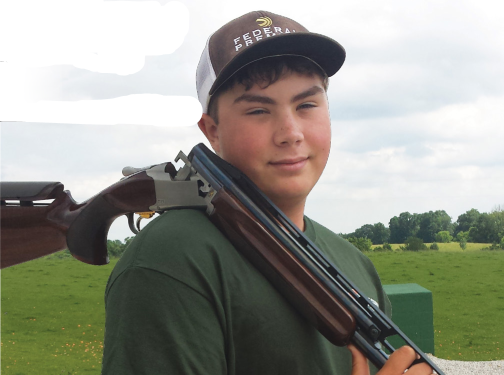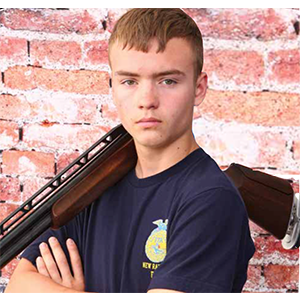
Did you know that clay target sports are more than 100 years old? The first patent for a clay target was awarded to George Ligowsky in 1880. Ligowsky also designed the first modern target thrower—‘trap’—designed to launch clay targets. He was trying to nd a different type of target than the glass balls filled with feathers that were being used for shooting sports at the time. The problem with glass balls was that they were very fragile and expensive to make. Ligowski solved the problem by using materials that were far cheaper.
Ligowsky’s invention made shooting sports more affordable, and spurred the development of many types of clay target shootIng sports. Today, the most common clay target shooting sports are trap shooting, skeet shooting, sporting clays and 5-stand.
TRAP SHOOTING

Trap shooting is a clay target sport in which a squad of up to ve athletes compete at one time. The athletes take positions in a semicircle around a structure from which clay targets are launched. That structure is commonly known as a ‘trap house.’
The athletes are positioned on five stations 16 yards away from the trap house, and the targets are thrown at various angles in a direction away from the athletes. Athletes take turns to shoot at ve targets at each station. Then the athletes change stations in a clockwise manner—the athlete on station one will move to station two, two to three, three to four, four to ve, and ve to one. The process continues until all athletes have each shot at 25 targets.
DID YOU KNOW: Trap shooting has been around since the 18th century and utilized glass ball targets before clay disks were introduced in the 1880s.
SPORTING CLAYS
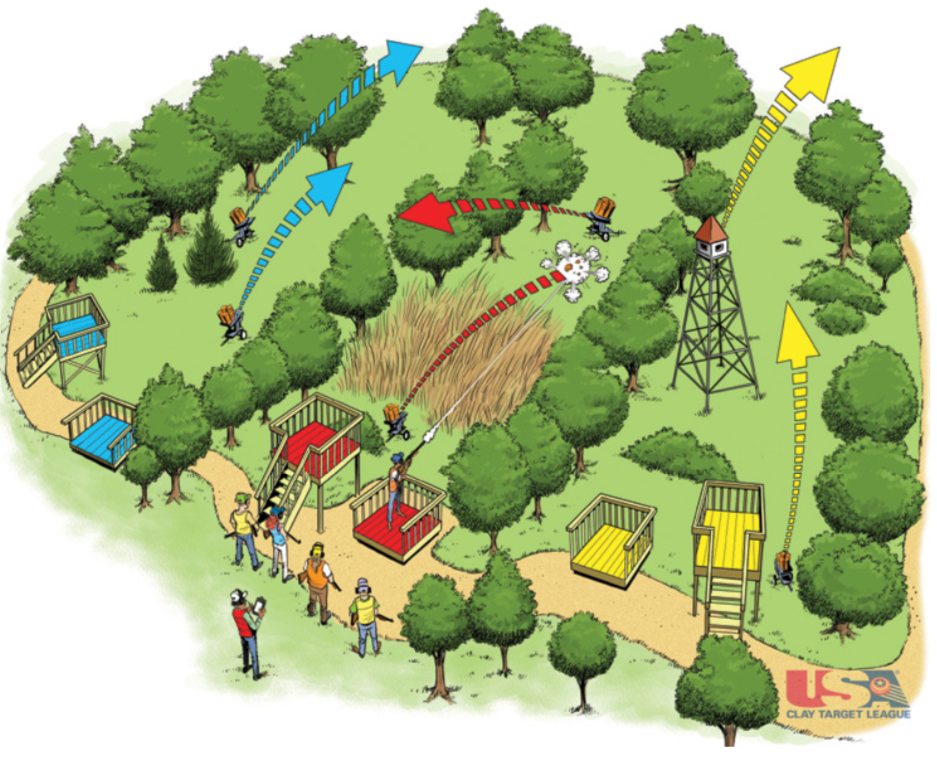
Sporting clays is a type of clay target shooting in which athletes shoot 50 targets from six to 12 different stations on a sporting clay course. Different fields within a course are typically located many yards away from one another and are accessible via walking along meandering paths.
Sporting clays courses are designed to mimic the feel of hunting live birds. As a result, courses vary considerably in terms of di the difficulty and design. Some courses may feature targets thrown very close and fast at sharp angles, while others may have targets thrown very high and distant. Many courses have stations which feature multiple targets at the same time or in quick succession known as true and report pairs.
Typically, four to six athletes compete at each station together, rotating through all shot scenarios before moving on to the next station. Each field will have one or two stations and a round will consist of six to 10 targets per station.
5-STAND
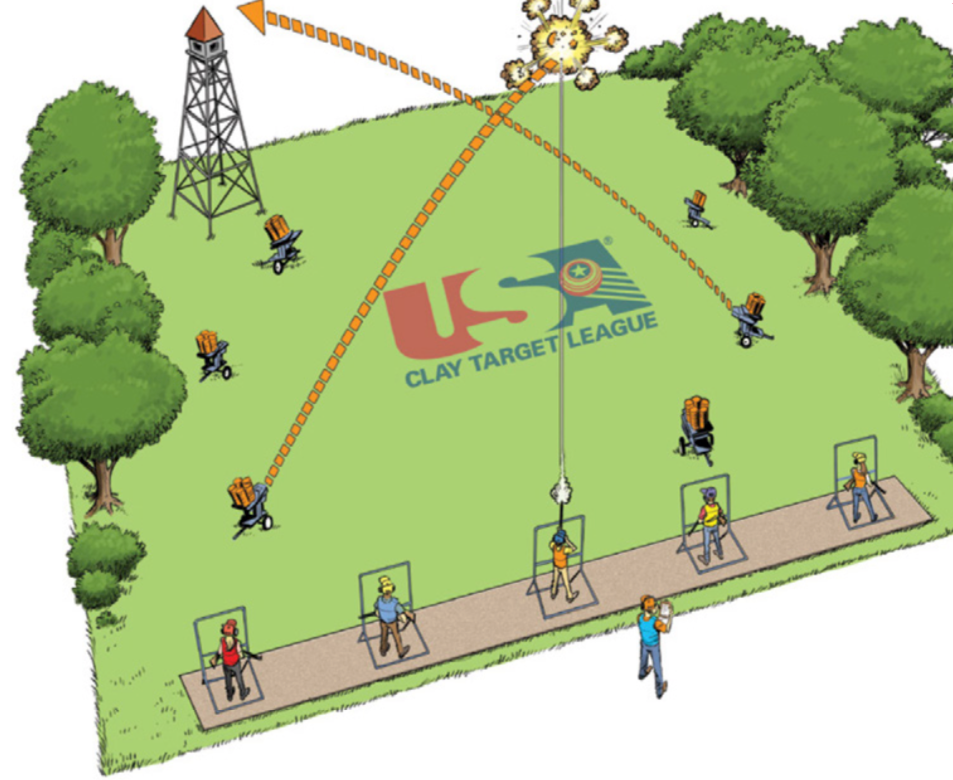
With a large field, multiple trap houses, and five stations, 5-stand is often described as a cross between trap shooting and sporting clays.
Like trap shooting, athletes line up in five stations set in a row. Each athlete then shoots at five targets—one from each trap house. A 5-stand field’s trap houses are strategically placed throughout a large field. Targets are thrown from a predetermined sequence with a variety of flight angles and consistent speed settings. Targets may be thrown from left to right, right to left, fading away, incoming, rabbit (along the ground), vertically, and from a tower or elevated platform. Each station has a menu card notifying the athletewhere each target is being thrown.
Generally, the first target thrown from each station is a single target followed up with either a report pair or true pair to round out that station. A ‘report pair’ is a single target thrown followed by another single target thrown after an athlete has made their first shot. A ‘true pair’ is when two individual targets are thrown at the same time from two different houses.
SKEET SHOOTING
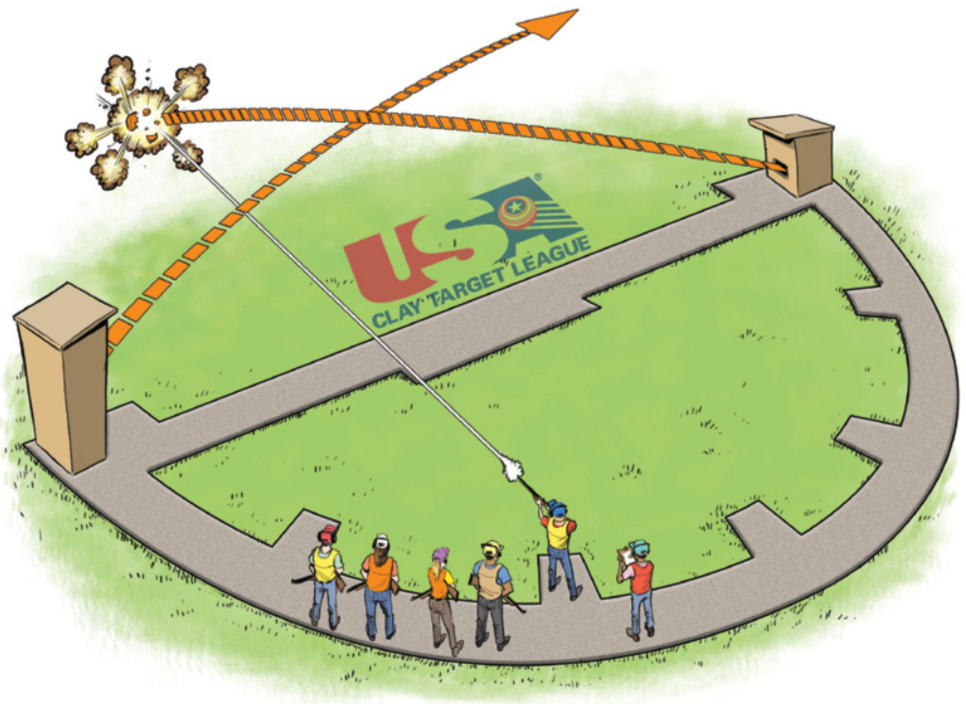
Skeet shooting is a very popular sport nationwide. It’s similar to trap in that up to five athletes shoot a round of 25 targets, however a skeet shooting field has two trap houses instead of one, and there are eight shooting stations instead of five.
Skeet fields feature two trap houses, one on either side of a semicircular shooting area. These houses are designated the ‘high house’ and the ‘low house.’ The high house throws targets from 10 feet on the ground, and the low house throws targets from three feet.
Athletes take turns shooting at a station, and then move as a group to the next station. Athletes at each station will shoot at single targets from the high house and the low house. At some stations athletes will shoot ‘doubles’—two targets launched simultaneously.The rules of skeet shooting also include an ‘Optional Shot’—an athlete must re-shoot his/her first missed target from the same station and at the same house immediately following a lost target. If no targets are missed in the round, the shooter must shoot his/her 25th shell at the low house station eight.

